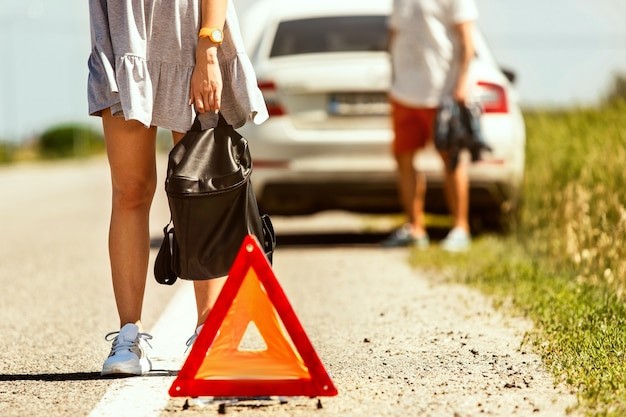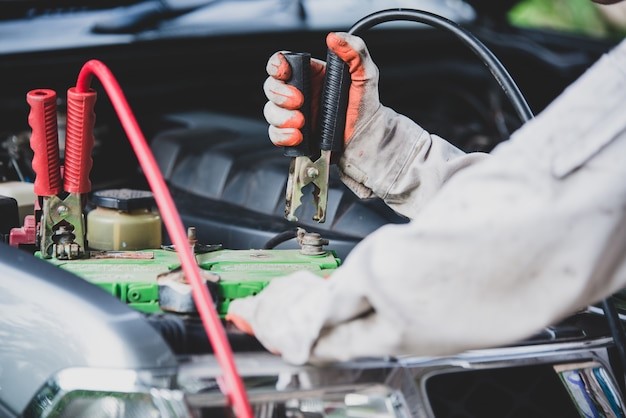Winter Common Car Problem: Why Your Battery Keeps Dying & How to Fix It
Cold does a number on your car, none more so than your battery. If you’ve ever attempted starting your car on a frosty morning only to be greeted with a disheartening click or annoying groan, you know precisely how maddening (and inconvenient) winter car battery failures can be. This blog will cover why your battery keeps dying in winter, signs you’re experiencing this common winter issue, and how to prevent and repair any battery bog down when the mercury drops.
Why Do Car Batteries Die More Often in Winter?
Cold Weather and Its Effect on Batteries
Your car battery relies on chemical reactions to generate and store electrical energy. These reactions run optimally in warm temperatures. When the temperature drops, the chemical reactions slow down significantly. This means:
- Your battery generates a reduced amount of electricity.
- Its overall capacity is diminished.
- It can have a hard time providing sufficient energy to engage the starter motor.
For example, a battery at 0°F can deliver only about 60% of the cranking power it would deliver at 80°F. That’s why so many batteries fail during a cold snap!
Increased Power Demand in Winter
Winter brings additional power demand. Think about all the accessories you rely on more heavily in cold months:
- Heaters to stay warm.
- Defrosters for a clear view.
- Headlights, as it gets dark earlier.
These all draw current from your battery, and when it’s already weakened by the cold, this added load could be the final straw. If you’re dealing with a weak battery, it may be time to consider a quick battery jump for your vehicle to get things running again.
Slow Engine Oil Adds Extra Load
In cold temperatures, your engine oil thickens. This increases the effort required to turn the engine over when you begin driving. Your battery needs to supply more power to drive your starter motor. If it’s already struggling, this additional load is enough to kill it.
Signs Your Car Battery Is Dying in Cold Weather
Knowing the warning signals can help you prevent getting stuck in the cold. Here are common signs your battery may be failing:
- Engine Cranks Slow – Your engine cranks slower than normal or struggles to start.
- Dim Lights – Your headlights and interior lights seem less bright than usual.
- Dashboard Warning Lights – You see the battery or check engine light appear.
- Clicking Sound – Instead of the engine starting, you hear a clicking sound when turning the key.
- Frequent Jump Starts – If you need a jump start often, it’s a sign your battery might be nearing its end.
If any of these signs are familiar, it’s time to test your battery before you end up stranded in the cold. If you need assistance, you can always reach out for urgent battery jump assistance to get your car up and running.
How to Prevent Winter Battery Failures
You don’t have to resign yourself to a dead battery in the winter. Here are a few simple preventive measures:
Park Indoors or Cover Your Car
If you can, park your car in a garage or under a carport to shield it from the cold and wind. This keeps your battery a bit warmer and minimizes heat loss. Even a simple car cover can help.
Regularly Start and Run Your Vehicle
If your car sits idle for too long, its battery can drain slowly. Running your car for 10-15 minutes a few times per week can help maintain a healthy charge, especially in freezing temperatures. You might also consider urgent fluid delivery to ensure your vehicle stays in top condition during winter.
Test Your Battery Before Winter Hits
Before winter sets in, test your battery with a voltmeter, multimeter, or a load tester. Many auto parts stores or mechanics offer free testing for your battery. It’s worth checking it out before winter’s chill arrives.
Insulate Your Battery
In extremely cold areas, consider getting a battery insulation kit or thermal blanket. These devices help maintain battery warmth, ensuring it’s ready to go when you need it the most.
If Your Car Battery Dies in the Winter, What Should You Do?
Even with all precautions, winter can still win sometimes. If your battery dies, here’s what you can do:
Try a Jump Start
If your car’s battery is weak but not completely dead, you can try to jump-start it. Here’s how:
- Park a working car nose-to-nose with the dead car.
- Turn off both ignitions.
- Attach jumper cables: Red to the positive terminal (+) on both batteries. Black to the negative (-) on the dead battery, and the other black cable to a metal part of the dead car.
- Start the working car and let it run for a few minutes before trying to start the dead car.
If you’re unable to jump-start the car, call roadside assistance for help.
Call Roadside Assistance
If the jump start isn’t working or you’re unsure about doing it yourself, roadside assistance is your best option. At All 4 One Transportation, we’re here to help with services like jump-starting your vehicle, testing the battery, and even suggesting or placing a replacement if needed.
Replace the Battery if It’s Old
A battery that’s too old may not respond to a jump-start. If it’s more than 3-5 years old and showing signs of corrosion or damage, it’s better to replace it. This will prevent you from facing repeated breakdowns during winter’s harshest days.
Pro Tips to Extend Battery Life Year-Round
- Avoid Leaving Lights On: Always double-check that your headlights and interior lights are off when you park.
- Maintain Clean Terminals: Corrosion can prevent current from flowing. Clean the terminals with a wire brush and a baking soda solution.
- Use a Trickle Charger: If your car is parked for extended periods, a trickle charger helps maintain battery health.
Final Thoughts
While nothing can be more frustrating than a dead battery in the winter, there are several ways to prevent it from happening. If you’ve done everything right but still find yourself in trouble, All 4 One Transportation is here to provide emergency jump-starts and other roadside services. Stay prepared, and don’t let winter leave you stranded.ergency, All 4 One Transportation is the ultimate in fast and reliable road-side assistance.
FAQs
Cold temperatures lead to slower chemical reactions inside the battery, weakening its power. Unless the battery is in a low state of charge or it is drained by accessories left on, it can be dead the next morning.
Try for at least 15-20 minutes for some of the battery to be recharged and the engine oil to get warm.
Yes. If a battery is completely discharged, the electrolyte inside it can freeze and expand, causing it to rupture and leaving the battery damaged beyond repair.




